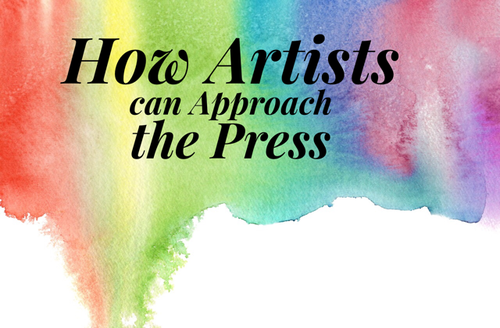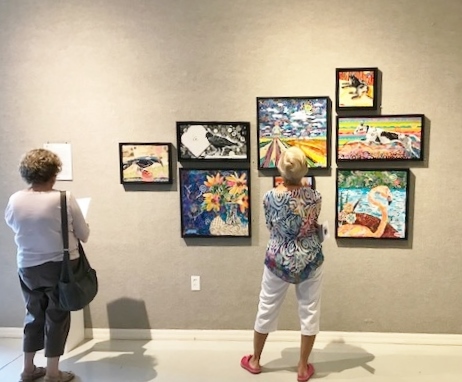by Carolyn Edlund
Want to attract press attention for your art? A thoughtful, planned approach gets the best results.

Successfully making connections with press members and others who are able to help promote and share your artwork is all about communicating. How you make the initial connection, what you say and whether you follow up all contribute to the outcome you’ll achieve.
Still, most notices you send out won’t end up getting you any publicity. It takes consistent effort over time to gain traction, simply because there are so many other people vying for attention.
Once you have gotten press, though, it’s easier to turn that into more opportunities. Reporters, bloggers and others who have a positive experience with you may reconnect for quotes, or if you have stayed in touch, they may write a follow up article. Additionally, once you share the publicity you’ve gotten, it indicates to other press members that you are newsworthy. And, it shows that you are easy to work with, responsive, and understand the process.
Artist Todd Scalise, the owner of Higherglyphics, has a systematic way of seeking press attention and publicity for his work, and he makes it part of his marketing plan and calendar. His niche is public art, in a form that he calls “Creative Placemaking” which is a natural fit for the work he does with cities, organizations and schools.
“I have found that a personal approach where you are speaking to the person, not the opportunity, is a great way to start a relationship.” – Todd Scalise
First, he researches potential press sources which are a good fit. He says, “I prospect communities, whether it be downtown development associations, corporations, arts non-profits, or educational institutions, who do not have the same creative ability to work at the scale that I do. With regard to prospecting individuals who would be interested in writing about my work, I usually take the same approach.”
Using a CRM (customer relationship management) system helps Scalise keep track of prospects, outreach and results. He admits that this is time-consuming, but adds, “it is a great way to stand out when you make your first approach to a media outlet. I have found that most artists skip this step, therefore they react emotionally without thinking about what there is to gain by both parties through the first contact.”
Sometimes, artists contact the press with news that they want amplified, without regard to the focus or needs of that media outlet. They may use a scattershot approach, hoping that contacting as many press members as possible, no matter who they are, will get results. These strategies aren’t likely to gain ground – and out of frustration, artists may give up.

Reach out with news about your work to media outlets that have a similar focus and purpose.
What should that first contact be? “I have found that a personal approach where you are speaking to the person, not the opportunity, is a great way to start a relationship,” says Scalise.
He explains, “I foster relationships with media outlets that have some connection to my field of Creative Placemaking but aren’t necessarily writing about it all of the time. For instance, I have found that my business model (a manifestation of original public art and marketing that I call “visual public relations”) is often seen to be unique in the business world. Consequently, I’ve had more business articles written about my company than reviews of the actual project artwork. That’s not to downplay the art, but I feel it is assumed to just write solely about the art. What is not assumed is how the art is a part of a business mechanism that provides lasting branding to communities. Therein lies the real story.”
Scalise does not ask for anything from the press member in his initial contact. “Just the opposite; I usually offer them something,” he says. “If I have been doing my research properly, then I have a lot to offer at the point of the first contact. There are many ways to do this. For a media outlet, a comment about a recent review indicates that you are an avid reader – ‘I enjoyed your last article, are you aware of such and such?’ etc.”
After his initial compliment/offering, Scalise indicates “I am also doing something that they would also be interested in.” At that point, he explains the connection in the form of a light pitch, without being too pushy. He says, “Writers and editors are busy people, so you have to do some of their homework for them.”
As the start of a new relationship, this makes sense. When a press member determines that an artist’s work, focus or vision closely aligns with what they write about, there is reason to pursue the conversation. This method won’t always work, but gives the artist an edge in finding those sources that are best positioned to work with them.
“Life is about relationships, so a good business relationship is worth taking your time on,” observes Scalise. “In other words, no one responds to someone who is anxious. However, it is also good to see when a relationship may not work out. In that case, I tend to reach out three times, and if I do not get a favorable response, I may decide to move on and come back to that contact later. Either way, I keep track of when and how I approach each media outlet.”


Speak Your Mind